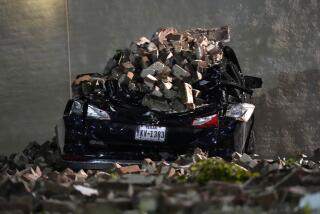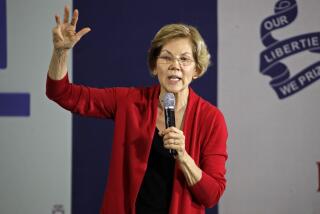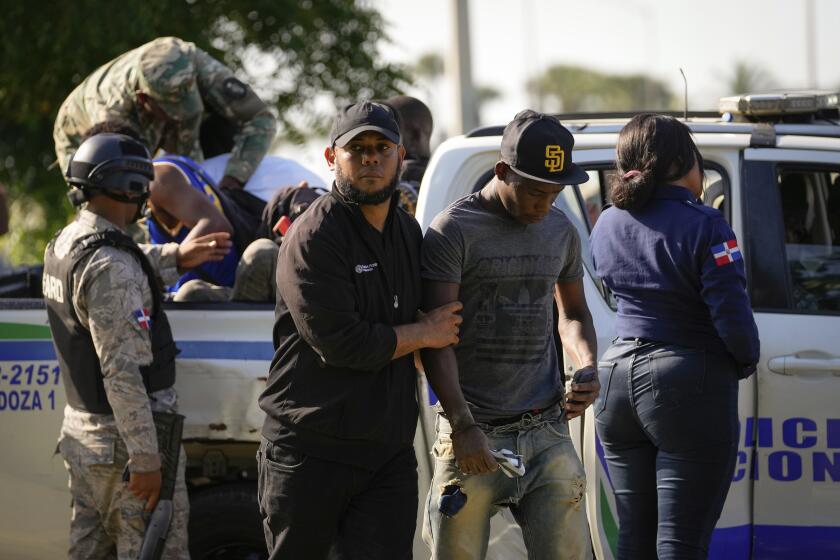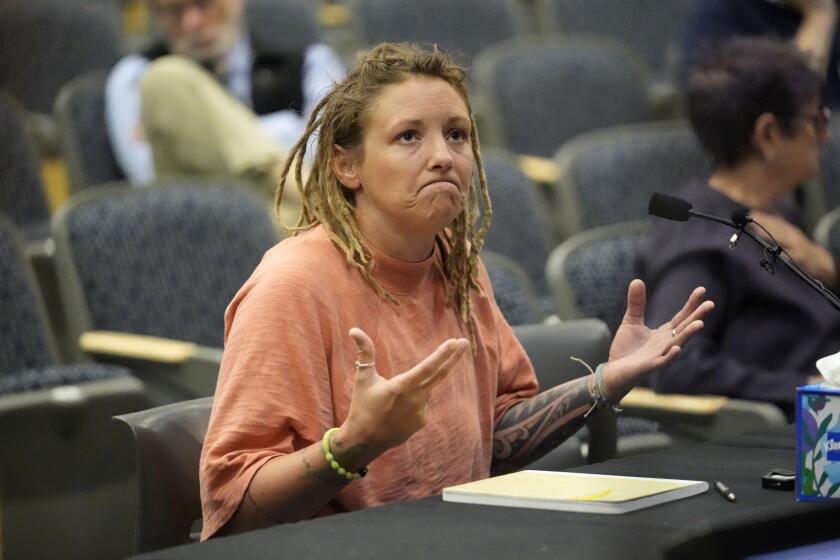‘Lights . . . TV Cameras . . . Action!’ : Media: It was a meticulously staged television show starring George Bush. But few print reporters were on the scene to review it.
Was that emotion in his voice or fatigue? What does the desert look like out there? Anyone seen a pool report?
Scores of journalists from U.S. and foreign newspapers covered President Bush’s televised visit to the troops Thanksgiving Day, but most of them saw little more than they would have had they been sitting at home watching the event on television.
With the President’s popularity slipping in opinion polls and his Persian Gulf policy under fire, the White House took a lesson from the Administration of Bush’s predecessor, Ronald Reagan. They staged a television show that starred Bush as the quiet hero and used scores of soldiers, a Navy warship, dozens of helicopters and four congressional leaders as props.
The final result, a scene of Bush addressing cheering Marines in the Saudi desert lighted by the setting sun, was “beautiful television,” said one network correspondent.
The scene, carefully timed to allow Bush to appear live on network morning news programs on the East Coast, “was Sig’s finest hour,” the correspondent added, referring to Sig Rogich, the Las Vegas advertising director who serves as Bush’s White House image director.
But for newspaper and magazine reporters, the desert trip came as a sudden--and unwelcome--reminder of how easily the President’s image can be controlled in a “made-for-TV” media event.
The White House sharply restricted the number of newspaper reporters who could accompany Bush to the military sites he visited--an army and a Marine post in the desert and the helicopter carrier Nassau.
Of the dozens of print reporters who followed Bush to Saudi Arabia, only 10--eight newspaper correspondents chosen by alphabetical rotation and two magazine reporters--were chosen to make up the “pool” that would go to the desert.
Military officials, who have spent much of the last week ferrying NBC weatherman Willard Scott around Saudi Arabia to do his morning forecasts from different troop locations in the desert, said they could not provide helicopters to ferry more reporters to the event sites, White House officials said.
By contrast, all four major television networks were allowed to send full complements of correspondents and camera crews to accompany Bush.
Scott, by the way, was the beneficiary of one of the more extravagant examples of network image-creation here. One day, when he had to remain behind in Dhahran, officials set up a tent and brought in sand to spread around it to provide a proper “desert” backdrop for his report, according to reporters who saw the set.
For those reporters who did not accompany Bush to the desert or the warship, headquarters became a large air-conditioned tent, complete with plush Oriental rugs, that Saudi officials set up as a media center here. There, reporters could hear tapes of what Bush had said and wait for reports from the pool while trying to guess whether long pauses in Bush’s speeches were a result of deep emotion, heat exhaustion or simple fatigue.
That focus on television’s needs was a staple of the Reagan Administration but was a departure for Bush, who through most of his first 22 months as President has consciously avoided overt attempts at televised image-making.
But with three network anchors--ABC’s Peter Jennings, CBS’ Dan Rather and NBC’s Tom Brokaw--all on the scene, television has dominated things here for most of the last week.
The International Hotel in Dhahran was surrounded by satellite dishes, power cables, stacks of television equipment and large plywood booths set up to provide “stand-up” spots for network correspondents.
More to Read
Start your day right
Sign up for Essential California for news, features and recommendations from the L.A. Times and beyond in your inbox six days a week.
You may occasionally receive promotional content from the Los Angeles Times.







